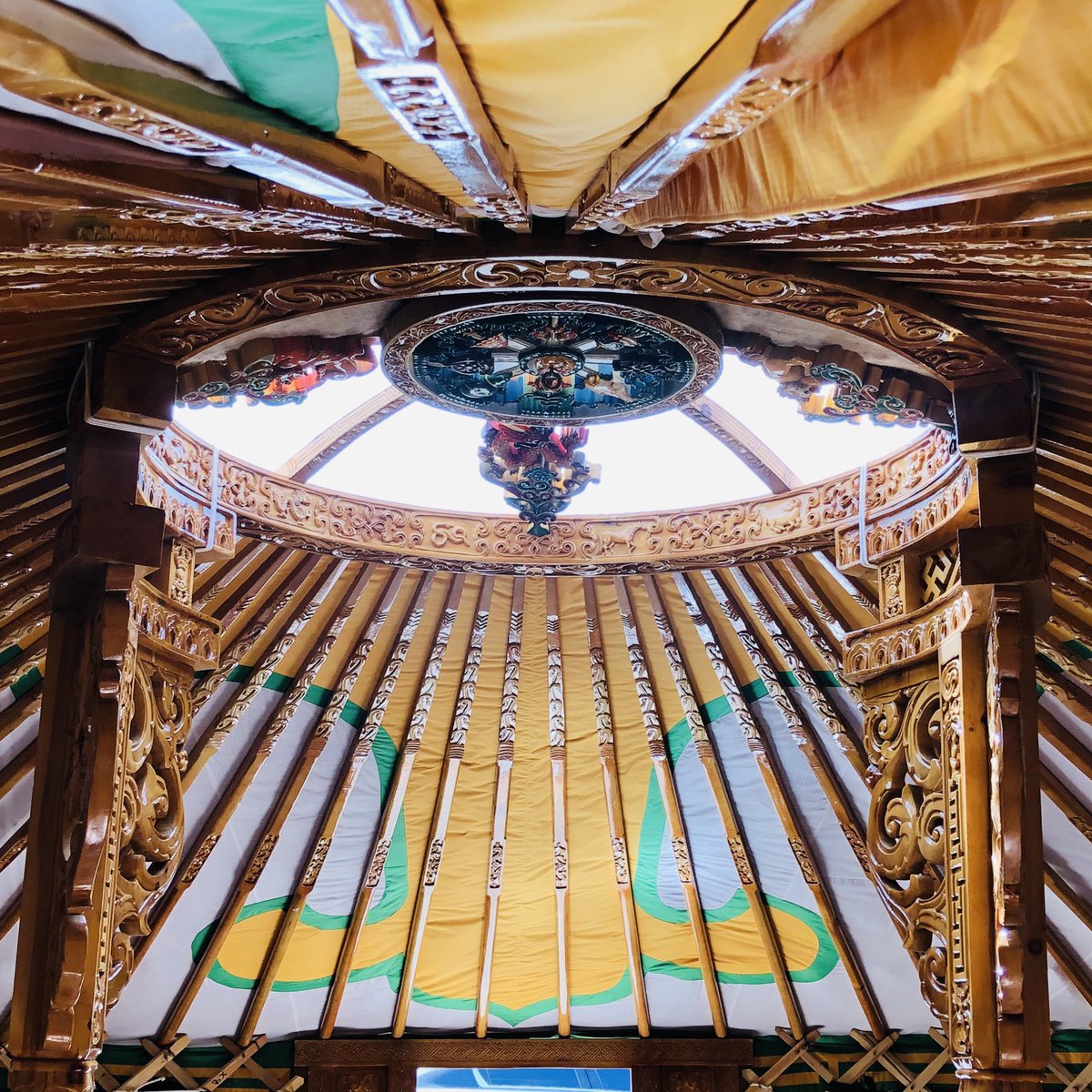The Mongolian Ger is a traditional home of nomadic people of Central Asia. The current general pattern of the Mongolian Ger was formed about 3,000 years ago, and it has come to this day as it has become the main necessity of nomadic life. A Ger that is best adapted to a nomadic life is very interesting in terms of its structure. Light to move in, compact, long-lasting, unique architectural solutions, good air circulation, cool in hot weather, warm in cold weather, etc.
In the notes of the medieval tourists about a 13th-century Mongolian dwelling called a ger-carriage, it was noted that “the movement of a ger-carriage looks as majestic as a large city moving. Ger for permanent use are divided into two main categories: Mongolian and Turkic Ger based on their design and appearance. Mongolian Ger are divided into halkh, oirad and buriad.
Mongolian Ger decoration
The Mongolian Ger decoration has been handed down since ancient times. Other than the walls of the Mongolian Ger, they decorate with various patterns. There are 3 types of wooden parts of Mongolian Ger: with wooden patterns, without patterns and painted, and plain without any decorative paint. Since ancient times, Mongolians have studied the effect of colors well and believed that red and orange colors create a warm environment of the sun inside the Ger. In order not to make the sunlight mixed with the red color of the number too bright in inside, it is characterized by relaxing the chest of the moon with green color and creating the harmony of other colors in the Ger. Mongolian patterns are very diverse. When the Mongolian Ger tree is decorated with patterns, the background is mostly red and reddish-brown (toono, columns, uni, doors), but only the chest of the uni is green.

The characteristics of Mongolian motifs are interlacing and continuity. Making images inspired by sheep’s horns by cutting them is the most common in Mongolian motifs. They are divided into many categories such as horn argal, deer antlers, argal antlers, cloud sheep, etc. Natural things, water, clouds, mountains, and animals are depicted by drawing, and many patterns such as cloud patterns, water patterns, etc. have been created. But there are many patterns that are represented in an angular form. A large part of Mongolian motifs is angular motifs. These include the famous Mongolian auspicious motifs, alkhan motifs, and queen motifs. In addition to these, there are hundreds of thousands of Mongolian motifs related to imagery, symbols, and religion.
Mongolian Ger structure
The Ger consists of two main parts: frame and log. In the early days, houses were made of wood, so they were called wooden houses. Later, when houses made of wood and felt coverings were created, they were called felt houses or felt tuurgatans. The wood of the ger is made up of uny, tono, walls and doors. It is made of cloth covered with felt and grown with animal hair. Felt covers are household, roof, log, and door.
There is a puzzle that goes into the structure of a Mongolian Ger. They are all detachable, light to carry and easy to move around. The vertical space of any apartment depends on the walls. If the walls of a Mongolian Ger are made completely flat like a house, it is impossible to move. The ancients searched for something that would become small when moving, but become many times larger when standing as the wall of a home. From it, the walls of the house were created in a way similar to a folding grate, which was passed down to many generations. Depending on the size of the house, the size of the structure will change. An ordinary house can be built in a few minutes. But the big houses of the kings were built in one to two hours. The structure of a Mongolian Ger is divided into two parts: the wood that creates the shape of the house and the soft tissue that covers it In addition, thick, thin, long and short straps will be added to tie these parts together. The Ger is a cone with a geometric intersection. The parts of the house structure have strict rules of assembly. Depending on the size of the Ger, a fixed size is given for making the pieces. The parts made in this size are assembled correctly and the Ger is built. During assembly, the head of the wall is shown wrongly (downwards), the number of the house is wrongly shown, etc, it happens to foreigners and Mongolians.

Mongolian domestic customs
Distinguishing the space inside the ger into the back side, the front side, the housewife’s side, and the owner’s side was a custom that established the rules of space and space in the ger. Mongolians place their hearth in the center of their homes. The right side of the space surrounding it is called the mistress’s side and the man’s side due to the fact that men’s things are placed on the left side and women’s things are placed on the left side. Naming the space inside the Ger by 12 years, pointing the direction, and creating the solar time schedule of the Ger by different colors was a legacy of the folk knowledge related to the Ger.


